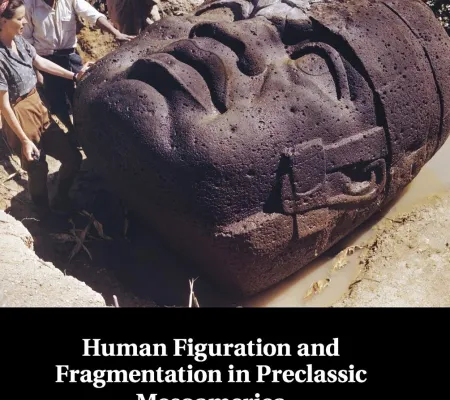D. J. Sibley Family Centennial Faculty Fellow in Prehistoric Art at the University of Texas at Austin Julia Guernsey has published a new book, Human Figuration and Fragmentation in Preclassic Mesoamerica: From Figurines to Sculpture (Cambridge University Press, 2020). The book examines the relationship between human figuration, fragmentation, bodily divisibility, personhood and community in ancient Mesoamerica, and provides the first comprehensive study of the role of both figurines and sculpture in the development of Mesoamerican figuration.
"Contending that representation of the human body in the pre-classic period gradually became a privileged act, [Guernsey] argues that human figuration as well as the fragmentation of both human representations and human bodies reveals ancient conceptualizations of personhood and the relationship of individual to the community," reads the description from Cambridge University Press. "Considering ceramic figurines and stone sculpture together with archaeological data, Guernsey weaves together evidence and ideas drawn from art history, archaeology and anthropology to construct a rich, cultural history of Mesoamerican practices of figuration and fragmentation."
"I came to this topic by way of a somewhat circuitous route," writes Guernsey in her book's introduction.
Having worked on Preclassic stone sculpture along the Pacific slope of Mexico and Guatemala for most of my career, I was a bit stymied by the lack of monumental sculpture that had been excavated at the site of La Blanca, Guatemala, where I was involved with archaeological investigations. Monu- mental sculpture was not absent from La Blanca, to be sure, and a modest corpus of fragmentary figural sculpture – a disembodied anthropomorphic head, a segment of a well-formed limb – existed. But these stone objects hardly competed with the corpus of figural objects modeled from clay, whose numbers were exponentially greater. Small, palm-sized clay figurines – equally fragmentary – abounded at La Blanca, and I was struck by the sheer quantity of human faces, torsos, and miscellaneous appendages that had been excavated from all sectors of the site.
A methodologically innovative study, Human Figuration and Fragmentation in Preclassic Mesoamerica has ramifications for scholars working in Mesoamerica and, more generally, those interested in the significance of human representation.
Guernsey is also the author of The Place of Stone Monuments (2010) and Sculpture and Social Dynamics in Preclassic Mesoamerica (2012).


